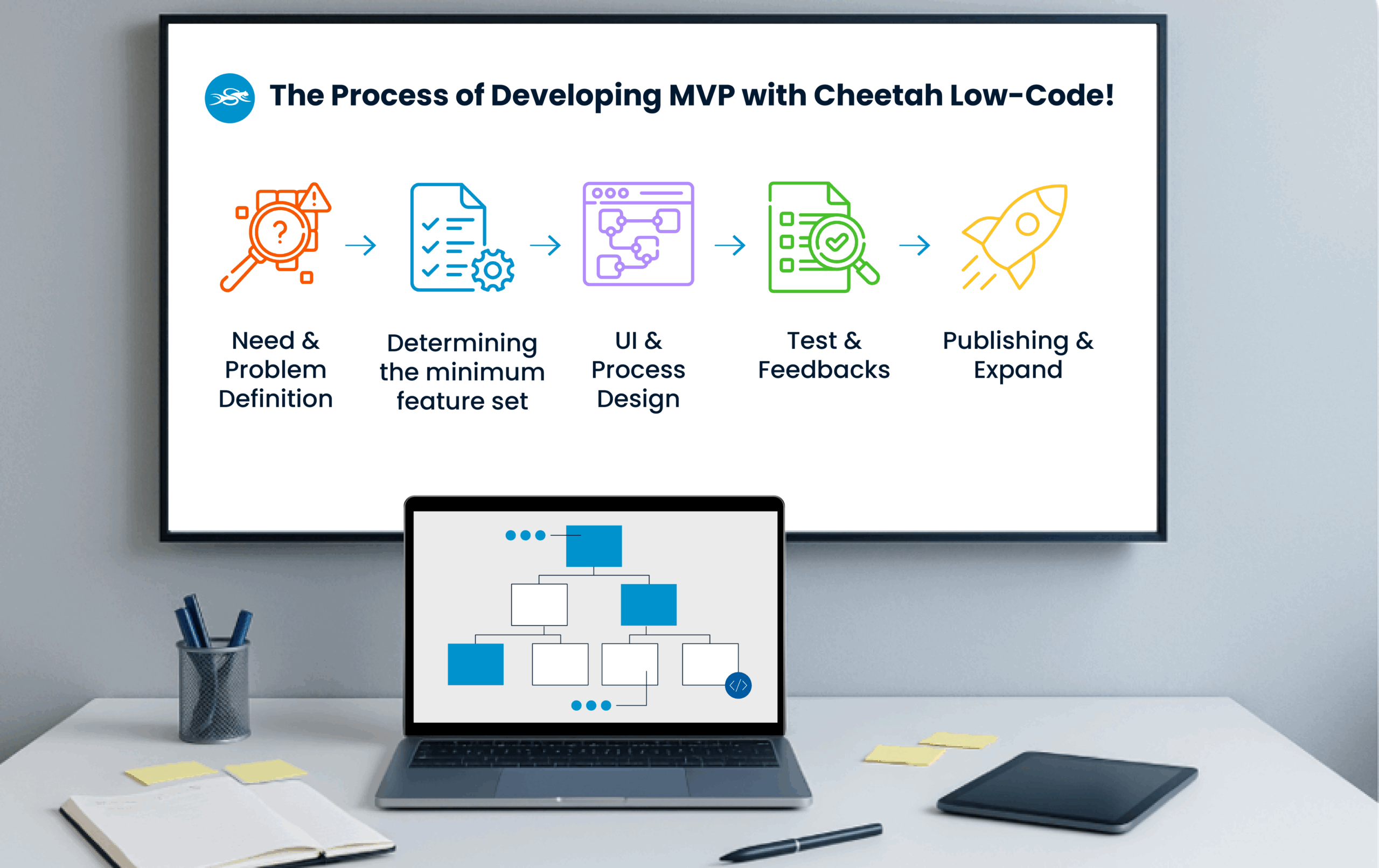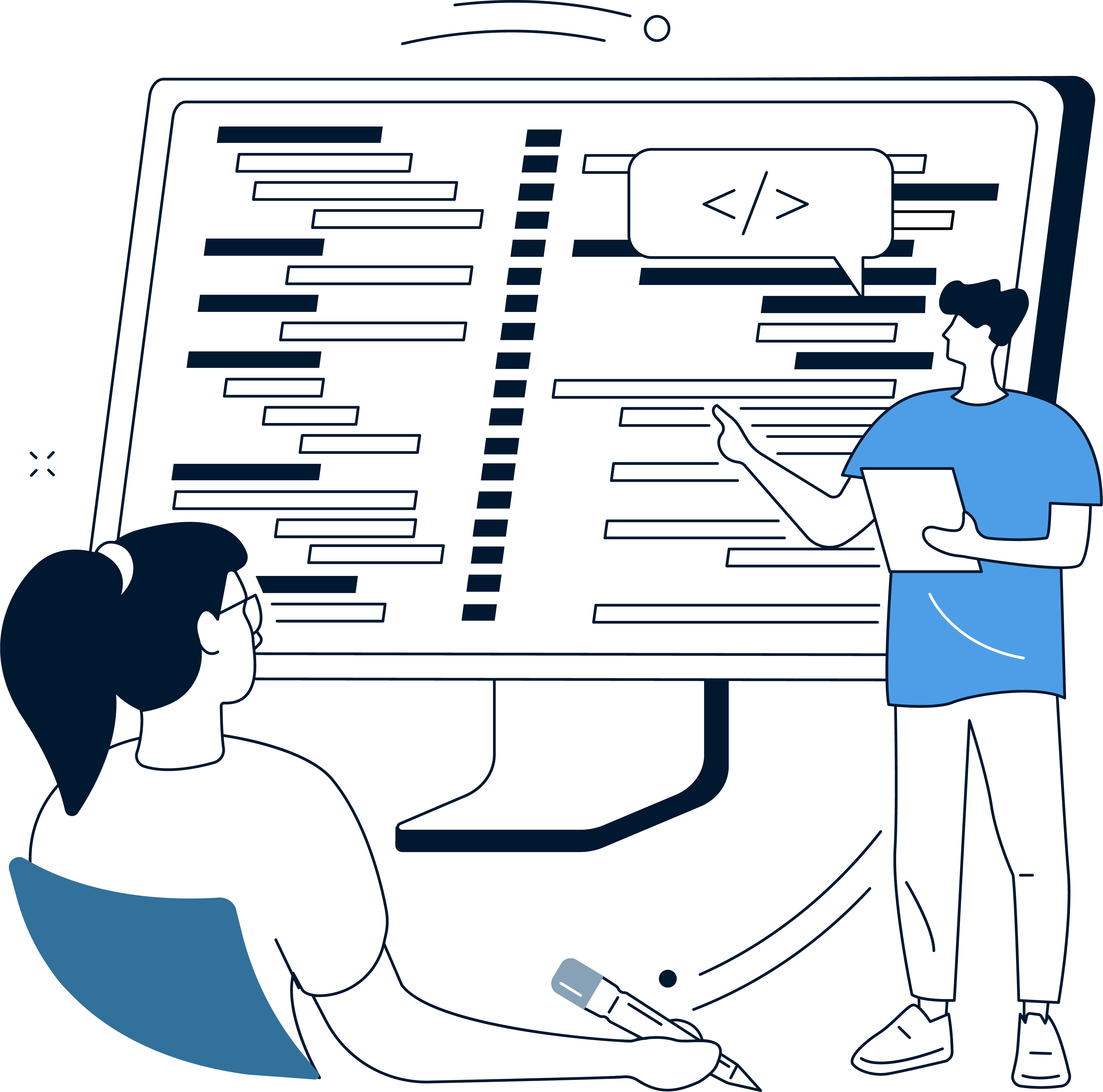
An MVP (Minimum Viable Product) is the initial version of a product that includes only its core functionalities, designed to test market viability. It is a strategic approach used by startups and enterprise product teams to quickly validate ideas and assess product-market fit. The goal is to launch the product at an early stage, gather feedback from initial users, and use these insights to shape its future direction. Compared to traditional product development methods, this agile approach helps avoid wasting time and resources while offering the opportunity to evaluate a business idea’s potential early on.
So when do organizations need a Minimum Viable Product? In which scenarios is developing an MVP a more strategic move? What should teams pay attention to during the development process? And most importantly, how does the Cheetah Low-Code Development Platform provide speed and flexibility throughout the Minimum Viable Product journey — from user experience design to the testing phase? In this article, we’ll walk you through the core principles of MVPs, key decision-making processes, and implementation strategies step by step.

Why Do Organizations Need an MVP?
✔ Product–market fit validation:
With an MVP, organizations can test market demand at a low cost before making a full investment. This helps avoid costly mistakes by focusing only on building products that are truly needed. The term “market” here shouldn’t be misleading—your target users may also be internal departments. In either case, the key is to ensure the product directly addresses essential needs at its most basic level.
✔ Resource and risk optimization:
An MVP shortens the development cycle and prevents resources from being wasted on unnecessary features, significantly reducing overall resource consumption.
✔ Internal capability assessment:
The Minimum Viable Product process reveals early on which modules can be developed in-house and which may require third-party support. This insight helps guide strategic decision-making.
✔ Easy iteration and cost-effective updates:
Since an MVP is a flexible, minimal version of the full product, making changes to it is much more economical in terms of both time and budget.
✔ User-driven development:
Early feedback from real users is invaluable for product direction. It helps validate product–market or product–user fit and allows future versions to be optimized based on actual user experience.
✔ Prototyping of internal processes:
Minimum Viable Product development isn’t just about testing a product idea—it also provides insight into how internal workflows operate. Business Process Management (BPM) enhances the strategic depth of MVPs by visualizing and improving these workflows. With an MVP, you test not only what should be built but also how it should be delivered. BPM helps identify inefficiencies and supports the creation of more sustainable and streamlined business operations.
What are Key Considerations When Developing an MVP?
When planned correctly, the MVP development process can significantly boost user satisfaction and directly impact a product’s success in the market. Here are the essential factors to keep in mind during this journey:
1. Defining and Prioritizing Core Features
An MVP should include only the essential functionalities that solve the primary problem the product is meant to address. Unnecessary features must be excluded. “Must-have” elements should be clearly prioritized. At the same time, potential iterations for future versions should be identified based on the frequency, impact, and feasibility of user feedback.
2. Embracing an Agile and Lean Approach
The MVP process relies on moving fast in small steps. The core cycle is: Build – Measure – Learn. The product is built, user data is collected, and insights from that data guide the next steps. This approach minimizes risk and ensures the product evolves based on actual user needs.
3. Establishing a Simple Architecture and Technical Infrastructure
Rather than starting with a complex software architecture, MVPs benefit from simpler, more manageable structures. Low-code platforms enable visual development and ready-to-use integrations, reducing technical complexity. This allows for faster development and scalable growth. As a result, infrastructure becomes easier to manage, while maintenance and updates can be automated. Clean microservice architectures—structured to avoid unnecessary complexity—are ideal for ensuring the application remains scalable, easy to update, and sustainable.
4. Focusing on User Experience
For early adopters, the interaction with the product is critical. The onboarding experience, error messaging, and a clean yet functional UX/UI design must all be carefully planned. A seamless first experience and user-driven feedback are key to Minimum Viable Production adoption.
To better evaluate user experience, organizations should go beyond traditional SLA metrics and adopt XLA (Experience Level Agreement) frameworks. This approach measures not just system performance, but also how users feel while interacting with the product—enabling more targeted and impactful improvements.
How Does Cheetah Low-Code Accelerate MVP Development?
Cheetah not only speeds up the Minimum Viable Product development process for organizations, but also simplifies it—creating an environment where business units can actively contribute. With its low-code infrastructure, Cheetah reduces the dependency on deep technical expertise and turns ideas into tangible products within weeks.
| Stage | Description |
|---|---|
| 1. Identifying Needs and Defining the Problem | The core problem and needs the organization aims to solve are clarified. |
| 2. Defining the Minimum Feature Set (Scope) | The most essential and critical functions of the product are selected; unnecessary features are eliminated. |
| 3. Designing the Application (UI + Process) | A user-friendly interface and digital workflows are rapidly built using low-code. |
| 4. Testing and Feedback | The MVP is tested with early adopters; improvements are made based on the feedback received. |
| 5. Launch and Expansion | The MVP is launched to the market and can be easily expanded with new features based on evolving needs. |
In short, Cheetah transforms product development from a purely technical task into an agile and collaborative innovation process.





